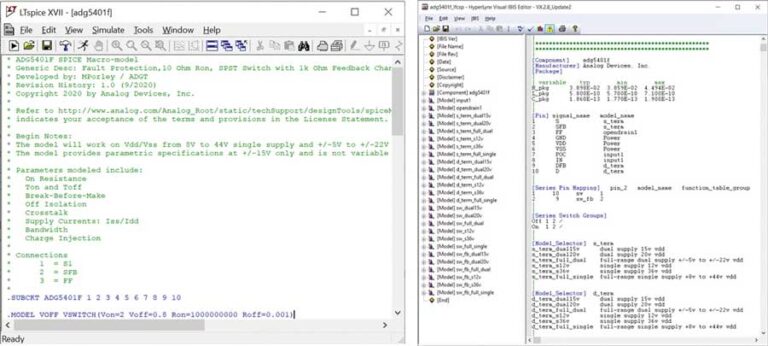Media
- Media
- SPICE vs. IBIS: Choosing the More Appropriate Model for Your Circuit Simulation
SPICE vs. IBIS: Choosing the More Appropriate Model for Your Circuit Simulation
As circuit simulation continuously gains popularity in the prototype industry, simulation models can be one of the critical requirements for broad and end market customers. SPICE and IBIS models are two of the most requested simulation models and can provide cost savings in the prototyping stage of circuit board development. This article differentiates SPICE from IBIS modeling systems and the significant impact of testing prior to circuit board fabrication. The article will discuss which model to use depending on the circuit design. It will examine sample use cases and commonly used simulation tools such as LTspice® and HyperLynx®.
What Is a SPICE Model?
SPICE is an acronym for Simulation Program with Integrated Circuit Emphasis, a general-purpose circuit simulator that takes a text netlist describing the circuit elements (transistors, resistors, and capacitors) and their connections and translates them into mathematical equations using nodal analysis and solves them. In relation, a SPICE model is a text-based behavioral model that is used by SPICE simulators to mathematically predict the behavior of a device under varying conditions.
What Is an IBIS Model?
IBIS is an acronym for Input/Output Buffer Information Specification. It is a behavioral model that describes the analog behavior of the digital input and output buffers of a device. It consists of tabular data that describes the current-voltage (I-V) relationship of the components within the digital buffers, as well as the voltage across time (V-t) switching characteristics of the output or I/O buffers. It is used for the signal integrity analysis of system boards prior to fabrication and is presented in plain ASCII-text formatted data. It does not disclose any proprietary information since IBIS models are like a black-box model, which does not contain internal information that can be reverse engineered.
What Do They Look Like?

Figure above: A SPICE file (.cir) on the left using LTspice and IBIS file (.ibs) on the right using Siemen’s HyperLynx.
© 2024 Excelpoint Technology Pte. Ltd. All Rights Reserved.

